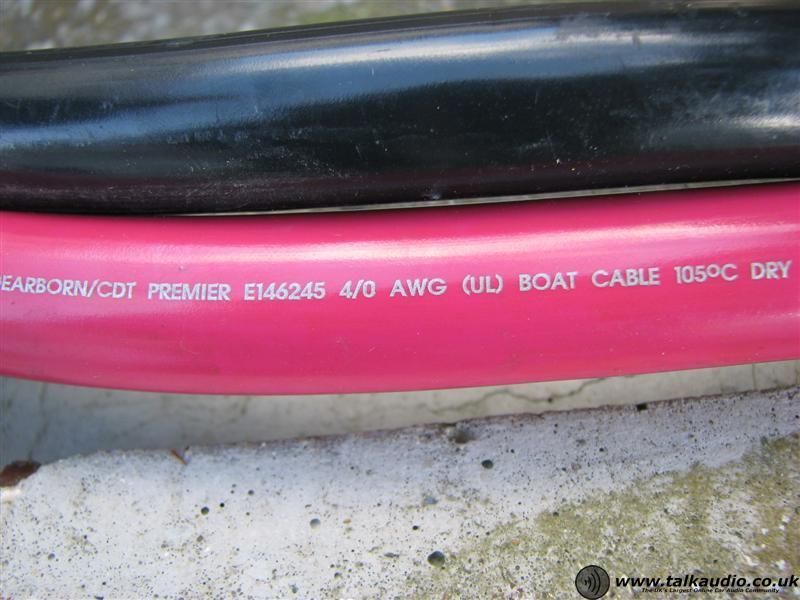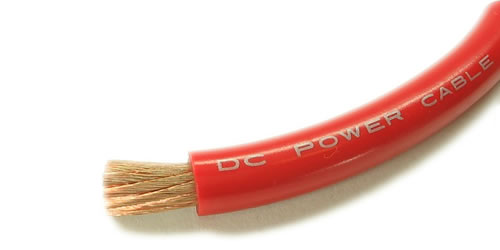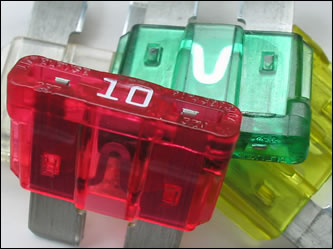Blood of Copper
No matter how awesome or KOAC-esque your mobile electronics are, (an adjective coined due to a review seen, they depend in every way upon the wires you plug ’em in with. I found this out a serious long time ago.
Wibble, wibble flashback effects
It was a world with car audio magazines just starting up. Legends like the Alpine Juba 7909 CD player and even a good amp made by Philips. There were Denons in those days. But wiring and accessories were entirely absent.
I would go and get ever yet bigger specification fuses at the auto electricians but found they couldn’t supply me with anything bigger than a so-called 35A heavy duty fuse holder and no fuse bigger than 35A. Sadly, not one of the folks I quizzed across counters ever said that as I had so many amps I should use a lot of power wires in a bunch to carry all the current as we now do with multiple runs of one-ruddy-over-gauge!
So I was a rolling fire hazard. I had my fuse (in the singular) mounted on the piece of blockboard it was all fixed to in the boot, with one rather long, hot and utterly unprotected wire running off to the engine bay from there. The once plastic and flexible fuse holder was a crispy thing when cold, having had bits melted off it and gone a bit brown here and there. Sometimes when I went to change the fuse, the fuse holder was so hot that strands of molten plastic would open up like spittle drool strings in a tortoise’s opening mouth. I would have to keep a sack of thirty or more spare fuses in the glove box as it was rare I ever had a drive without getting over excited and coughing it up.
In all fairness, I had used a copper strip bus bar and connected each amp soldered and screwed to this as there was no such thing as a distribution block in those days and neither was there such a thing as a ‘bass’ amplifier. I managed to get the guys at Sansui UK arguing with each other with one still halfway up the stairs at the their Watford offices where I had gone to nag them, about how to make my two bridged stereo amplifiers feed a third to run a subwoofer. They knew about bridged (the amps were 32W in total RMS and said SM-100 on the outside) but figured it would always be just to feed one amp each up two six by nines. So they were puzzled. They worked it out and I have kept the board as a museum piece to this day.
Then, I got to reading the American magazines.
One name came shining through. StreetWires. Even the name was cool (and was a brand of Esoteric Audio at the time who did high end home stuff too, including patch bays!) and every single show car you read about and marvelled at had their stuff in it, lined up so the logo matched on the wires and with the bits and bobs finished off like jewellery. They had fuses to huge Amperages and they had bigger fuse holder/fuse formats than I had ever seen in the UK. ‘Four Gauge’ was impressive enough but ‘One Over Gauge’ blew my socks off. It was such thick and amazing stuff that when I got my lump of it home to work into my install, I showed it to my woman, who I stupidly thought would be impressed. She was under whelmed and I still get over excited at seeing four over gauge cable
and when I dropped one end and it hit her toe she called me a name. It began with c, so I know it hurt.
In order to buy a power system to run all five of the Denon amps I had subsequently bought, I had called up from work at Stirling Audio (a pro-audio distributor, where I was the new boy, selling Lexicon Midi remote controllers and small reverbs and noise gates and cables by Mogami for wiring up studios and so forth) and tried it on as a ‘trade’ customer. I had successfully done so with Denon and spent a grand at trade, £300 of which was for the CD player alone! Which dates me well as having been there. CD decks were a fat £600 retail for car use and they were selling!
I discovered that there was a guy in Harlesden who was the new UK distributor for StreetWires and after phoning him, he said I could go round and buy some stuff. I spent another grand!
Thing was, as I went through Snappits and Clippits and eight gauge wodgers and four gauge power ring crimps and one over gauge grub screw distribution blocks and even eight gauge speaker cable (never seen since it was sexy stuff) it became clear that I was more up to speed on the difference between a power fork and a speaker snadger than he was.
He gave me a job and my career path was altered forever from pro to car. Along with the other lines he distributed to dealers, (Hifonics, Altec Lansing, Cerwin Vega) I was in charge of helping dealers order StreetWires for the power and signal side. RCA was by the reel and there was a choice of plugs. I don’t think anyone sells stuff quite that way any more. And all the rest was by the reel.
All anyone wanted was to know what they needed for a given install and so before long, the better suppliers were making kits of cables and bits ready chosen, matched and assembled by way of an answer. Of course the crimps and widgets are still things you can cock up and might need to go get more, so it is always a good idea to know a tame dealer who can sell you matching bits for any given wiring kit but the best way to sort things out is to get one of these assemblies of all the bits and pieces and hanks of cable, as well as sometimes the signal RCA cords, all packaged and neat in the right lengths for your size of car. It’s worth it just to know you have the stuff you need.
As with so many things, you get what you pay for and quality and content of wiring kits varies with price. Thus, in order to choose the right kit for your level of need, we figured we’d open a few up and see what you get for the job given on the packaging. Here are a few of the different sorts of wiring kits on the market and what we think of them.
KnuKonceptz:

